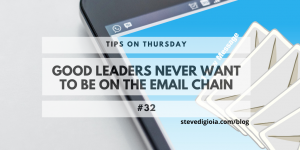Just because you run an e-commerce business doesn’t mean you run a successful e-commerce business, especially considering the epic changes the industry has endured as the mobile Web continues to grow and change. A long-lived e-commerce site knows how to interpret data, predict trends, and act (and react) fast to gain the most rewards. To help you survive another year in e-commerce — or perhaps, your first year — we offer you this handy guide to the near future of online retail.
Best Categories
Few e-commerce retailers find success by peddling any- and everything; besides a handful of retail giants, like Amazon, most online stores find success by securing a niche. Fortunately, with careful analysis of online trends, experts are able to predict the categories of products most likely to be big for online sellers in 2016. Here’s how to stock your store for next year’s rush:
Active-wear. Fitness has slowly but surely become fashionable, and now avid exercisers are expected to look suave while they sweat. Even better, “athleisure” (sporting active-wear in non-active settings) is on the rise, pulling in buyers who might never before have considered owning athletic clothing. During 2015 alone, traffic to workout apparel sites has increased about 38 percent, and spending at those sites has risen more than 11 percent — which is nearly double the increase from the year before.
Baby stuff. Babies are big for retailers: Parents always want to do best for their children, and oftentimes that means paying top-dollar for essential baby supplies. Particularly hot are baby brands that grow with kids and boast environmentally friendly materials and practices. Baby sales should generate roughly $ 44 billion in sales in the U.S. during 2015 with increased prospects for 2016.
Education. There is no denying the importance of a good education in our economy — especially online. Everyone from K-12 children to employed professionals can seek academic improvement, and e-learning sites are capitalizing on the exploding market. In 2016, educational sites should exceed $ 50 billion in revenue.
Home decorations. In the past, home decorators preferred to feel fabrics, look at lighting, and test out furniture before buying, but recently, online decor shopping has boomed. Since the 2014 holiday season, online furniture sales have been on the rise; it helps that many e-commerce sites are adding features like 360-degree views, free delivery, and easy return policies to bigger purchases. Already, the online décor industry is up to $ 100 billion, but as customers become more comfortable with digital decorating, sales should continue to climb.
Best Features
Most e-commerce sites stick to the same structure: categories at the top and left, product lists in the middle, contact info to the bottom and right. Because so many sites are similar, it can be hard to parse out exactly which features customers love — and more importantly, which features improve conversion rates. However, there is one feature that is unequivocally useful for shoppers and retailers alike: reviews.
Simply displaying customer reviews has the power to raise overall site sales by more than 60 percent, and 50 or more reviews can increase an individual product’s sales by upwards of 4 percent. It is even better to receive and exhibit reviews from social media; user reviews from Twitter usually improve conversion rates of a product by early 6.5 percent. According to Top10BestWebsiteBuilders, it is imperative that new e-commerce sites in 2016 make good use of website builders that can offer such valuable features.
Best Traffic
Though e-commerce sites should never discourage site views of any kind, apparently not all traffic is created equal. By leaps and bounds, the quantity of direct, search, and referral traffic outweighs the number of visitors from social channels, but it seems that shoppers coming from social media sites are more likely to spend extra time perusing products, which dramatically increases their chances of making a purchase. Instagram and YouTube in particular are powerful channels for attracting site visitors and keeping them happy.
Best Customers
It might also be surprising to learn that not every customer is an online retailer’s best customer. Even within e-commerce, it is dramatically more cost-effective to keep previous buyers interested than to attract a completely new set. Aside from the gargantuan amounts of time and money it takes to locate and entice a new audience, it seems that repeat customers provide comparatively more revenue. In 2014, roughly one-third of all online spending was due to returning shoppers — which is nearly $ 365 million in revenue. In 2016, it will help to reward loyalty with love.
Digital & Social Articles on Business 2 Community(14)
Report Post




